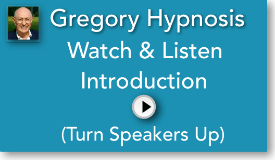
Over 55 years experience
Pain relief with Gregory Hypnosis
If you have pain and need a solution then Hypnotherapy could help you.Discover Unprecedented Pain Relief: Gregory's Unique Approach with Hypnosis and Hypnotherapy
Are you ready to break free from the shackles of chronic pain and embark on a journey towards lasting relief? Gregory's Unique Approach to Pain Relief with Hypnosis and Hypnotherapy is your beacon of hope, offering innovative methods that harness the incredible power of your mind. Here, we share quotes, reviews, and insights to illuminate the path to a pain-free life.
Quotes that Embody Our Approach
Paul McKenna: "The mind has an incredible ability to influence the body. With the right mindset, you can manage pain more effectively than you ever thought possible."
Anthony Robbins: "It's not the events of our lives that shape us, but our beliefs as to what those events mean."
These quotes highlight the central theme of our approach—empowering your mind to manage and alleviate pain effectively.
Real-Life Success Stories
John's Journey: John, a chronic pain sufferer for years, found renewed hope through Gregory's Unique Approach. "I had resigned myself to a life of pain and medication. But after working with Gregory, I feel like I have control over my life again. The pain has diminished, and I'm no longer a slave to it."
Lisa's Transformation: Lisa had been battling daily migraines until she discovered hypnotherapy for pain relief. "I was skeptical at first, but the results were astounding. Hypnotherapy allowed me to change the way I perceived pain, and the migraines have become less frequent and less severe."
Reviews that Speak Volumes
Jane S.: "I can't thank Gregory enough for what he's done for me. Living with arthritis pain was draining my spirit, but after working with him, I feel like I have my life back. The relief is real, and it's sustainable."
David R.: "I was hesitant to try hypnotherapy for pain, but Gregory's approach made it accessible and effective. The relief I've experienced is beyond what I could have imagined."
The Power of Hypnotherapy for Pain Relief
Our approach taps into the remarkable potential of hypnotherapy to reshape your relationship with pain. Through personalized hypnotherapy sessions, practical exercises, and expert guidance, you'll regain control over your physical well-being.
Begin Your Journey to Pain Relief
Imagine a life where pain no longer dictates your every move, where you are the master of your comfort, and where your mind becomes a powerful ally in your quest for relief. Gregory's Unique Approach is your trusted companion on this transformative journey.
Commence your journey to pain relief with Gregory's Unique Approach today. Reclaim your vitality, liberate yourself from pain, and embrace a life filled with comfort and well-being.
Ask yourself if the pain is of any use to you.If you were free of the pain, do you lose anything?Is it giving you any benefit at all?Physical and emotional pain are very similar.They are both experienced in the same part of the brain.* No guarantees and Results varyIf you can describe or talk about your pain in a Therapy session then perhaps together we can discover it's causes.Provided the cause is not 100% physical then it may respond to a psychological approach.Which means that Hypnotherapy also can lead to improvement.
As a Clinical Hypnotherapist Dip.Clin.Hyp. I can discuss any issue(s) confidentially with you by Chat Text Talk or Video on WhatsApp or Email me.Practice and Office is at Sunnybank Hills 4109 Brisbane Qld Australia.Same address since 2004. Previously Gold Coast and Sydney.Book in nowOr Contact Us 24/7
When you call, normally I can answer,
but if I’m with a Client and can’t respond quickly
please leave all details and a full message
for me to reply to ASAP.
orScan or ClickWhatsApp QR code
Services
Private SessionsPast Life Age RegressionGregory Therapy ToolOngoing Therapy Life CoachingOther Leading HypnotherapistsHypnosis Expert TalksOnline Programs
Live Online Zoom SessionsMp3 Lose Weight or Quit SmokingMp3 Relieve Stress or Improve MemoryMp3 Past Life Regression or Custom MadeHypnosis Webinars and Recordings of recent topicsGoals - setting and reaching themWatch Gregory Introduction* No guarantees and Results vary
About me
I am a Clinical Hypnotherapist Dip.Clin.Hyp.
A Registered member of the Australian Hypnotherapists' Association (AHA).
A member and Accredited Hypnotherapist with the Guild of Australian Hypnotherapists (GoAH). I am a recognised Medical Fund Provider for the funds which do cover Hypnotherapy. Check with your provider.
I have a Blue Card for working with children.
My Queensland Police - National Police Certificate is current. I am also a Therapist, Councillor and use Psychology, Psychoanalysis, Psychotherapy and Advisor Techniques.
I am a Consultant and Hypnotist with over 55 years experience in these fields. I am NOT a Psychologist.
I specialise in many areas including Relationship Counselling, Sports Hypnosis, Business Hypnosis, Management Hypnosis, Grief Counselling and Pain Relief.
All Sessions are Confidential in a comfortable private setting. I can be your Go To person for anything troubling you. Started first Hypnotherapy Clinic in Randwick Sydney 1967.
Moved to Gold Coast 1981.
Opened Sunnybank Hills Brisbane Clinic 2004 and still here today. I provide Face to Face one on one and also recorded Hypnosis Sessions.
Online individual or group over Zoom or even phone. If you need help and are keen and reliable to pursue the changes you want please contact me.
* Disclaimer





